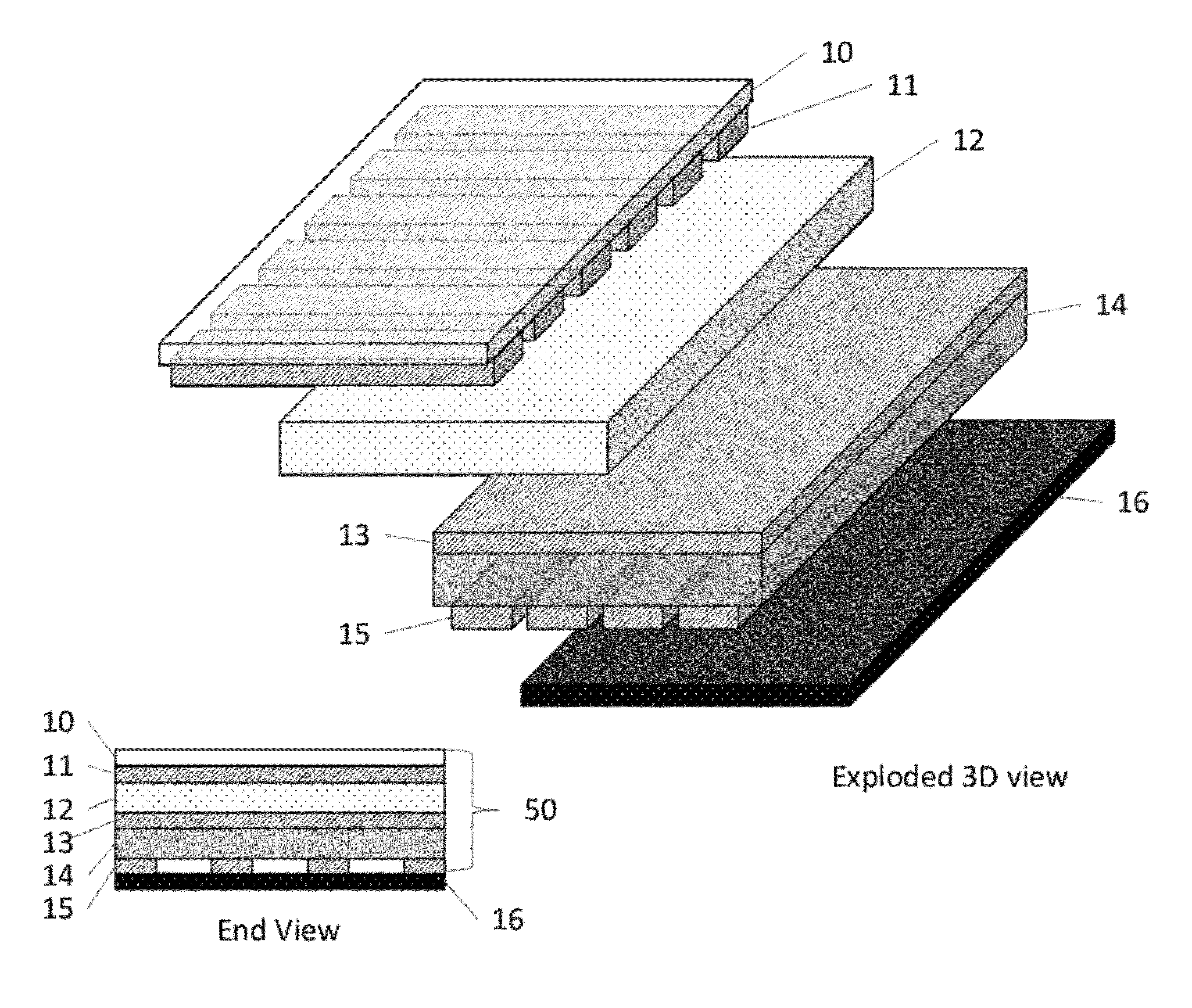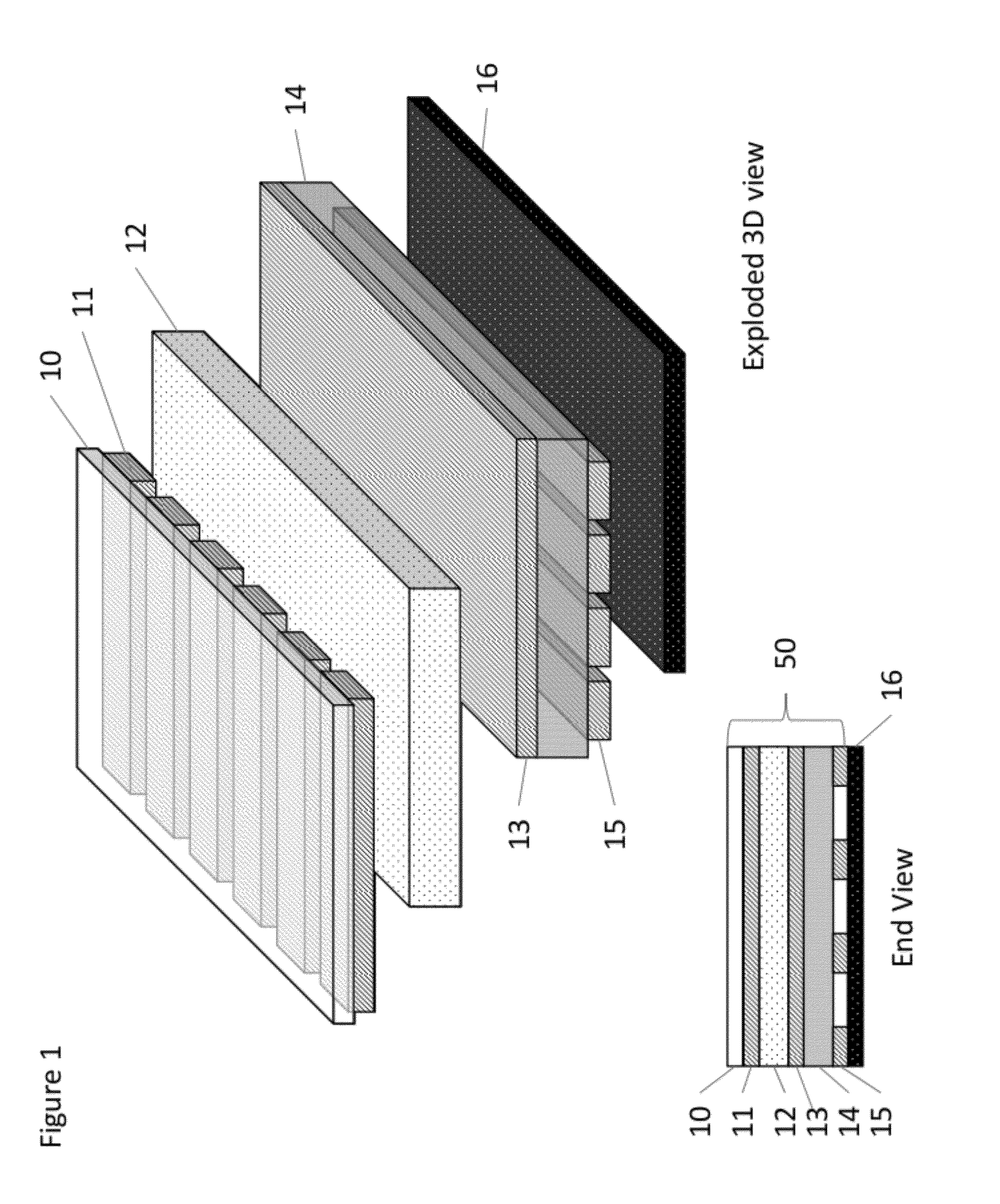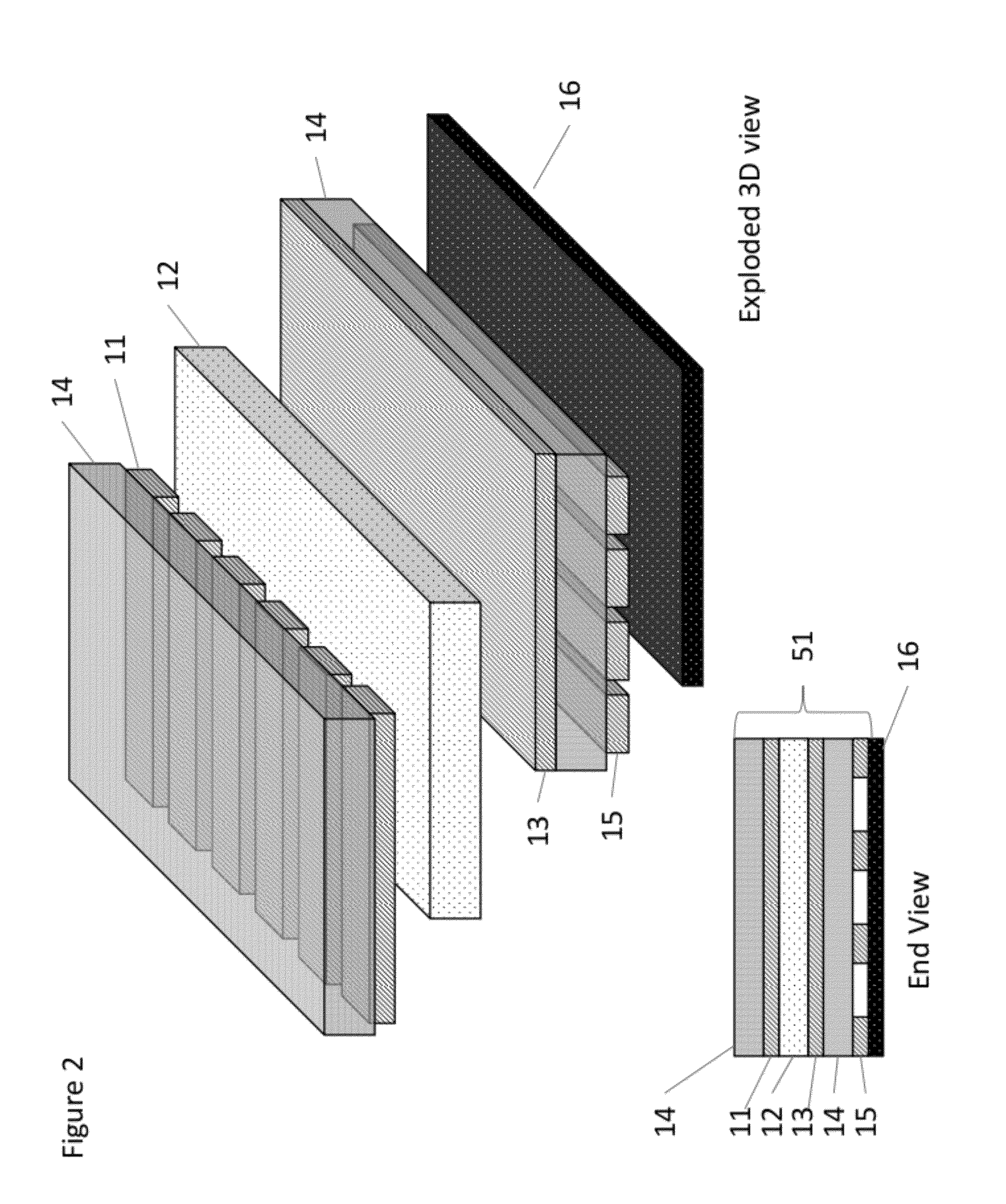Display device including piezoelectric and liquid crystal layers
- Summary
- Abstract
- Description
- Claims
- Application Information
AI Technical Summary
Benefits of technology
Problems solved by technology
Method used
Image
Examples
Example
[0070]FIG. 13: Photograph in Example 1 showing the writing tablet at the intersection of the Cr / Au electrodes in the initial (left) focal conic state and after switching (right) in the planar state.
DETAILED DESCRIPTION
[0071]Several different embodiments of display devices are provided below.
[0072]Embodiment 1a of the digital imaging device is shown in FIG. 1 where the columns of the piezoelectric film are selected and driven while the data is applied to the rows of the cholesteric layer. In this embodiment, a piezoelectric film 14 is used as one of the substrates for the cholesteric liquid crystal material 12. This embodiment is to take advantage of reduced threshold voltages provided by the cholesteric material during the time strain is induced by the piezoelectric layer. A discussion of the operation of a writing tablet that can be used in this disclosure is provided in the following paper, T. Schneider, G. Magyar, S. Barua, T. Ernst, N. Miller, S. Franklin, E. Montbach, D. Davis,...
Example
Example 2
Driving a Cholesteric Liquid Crystal Layer to the Planar Texture Using Ceramic Piezoelectric Particles
[0089]A Lead zirconate titanate (PZT) ceramic piezoelectric sensor was pulverized into a fine powder. Particles were filtered to remove large particles. Average particle size was less than 5 micrometers as measured by microscope. The particles were mixed with a polymeric binder and water mixture at 2:1 ratio of particles to binder by weight. The binder was composed of 50% water 30% polyvinyl alcohol 20% polyethylene glycol by weight.
[0090]A pressure sensitive display from a Boogie Board™ of Kent Displays, Inc. with 2 mil thick substrates was used for the cholesteric liquid crystal device. Graphite paint was applied in a 1 mm thick line to the backplane of the device as a conducting electrode. A 200 micron thick layer of PZT particles and binder was cast onto the graphite. A silver conductive paint was applied in a 1 mm thick line on the PZT particles and binder layer to for...
Example
Example 3
Driving a Cholesteric Liquid Crystal Layer to the Planar Texture Using a Ceramic Piezoelectric Post
[0092]A solid 0.254 mm thick flat PZT ceramic piezoelectric was painted with silver conducting paint on both sides and electrically connected to an amplifier and waveform generator. On top of the piezoelectric material, a small 1 mm wide plastic post was glued with cyanoacrylate (superglue). The top of the post was glued to the bottom of a supported cholesteric writing tablet display (the Boogie Board™).
[0093]The device was first driven to the focal conic texture by applying a voltage pulse (pushing the erase button) of the Boogie Board™ display. A 5 Hz square wave at 160V was then applied across silver electrodes producing a clearly visible planar texture in the writing tablet display in an area roughly 1 mm in diameter. The planar texture could be erased with the erase button of the Boogie Board™ and driven again to the planar texture with 5 Hz, 160 V square wave. When the d...
PUM
| Property | Measurement | Unit |
|---|---|---|
| Diameter | aaaaa | aaaaa |
| Diameter | aaaaa | aaaaa |
| Pressure | aaaaa | aaaaa |
Abstract
Description
Claims
Application Information
 Login to View More
Login to View More - R&D
- Intellectual Property
- Life Sciences
- Materials
- Tech Scout
- Unparalleled Data Quality
- Higher Quality Content
- 60% Fewer Hallucinations
Browse by: Latest US Patents, China's latest patents, Technical Efficacy Thesaurus, Application Domain, Technology Topic, Popular Technical Reports.
© 2025 PatSnap. All rights reserved.Legal|Privacy policy|Modern Slavery Act Transparency Statement|Sitemap|About US| Contact US: help@patsnap.com



